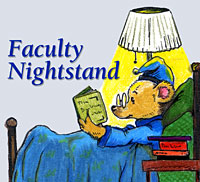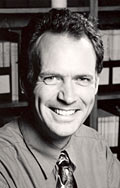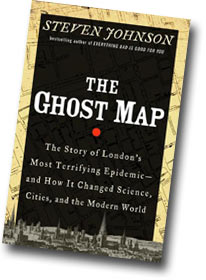UC Berkeley Web Feature
 On sabbatical in Britain, Nick Jewell searches for a compelling portrait of London
On sabbatical in Britain, Nick Jewell searches for a compelling portrait of London
BERKELEY – Biostatistician Nick Jewell usually keeps a stack of books on his bedside cabinet, each title "brimful of promise and intrigue." Due to his "annoyingly linear way of thinking," he prefers to read them one at a time, rather than have several "on the go" simultaneously. Jewell has been traveling on sabbatical in London and Italy this semester, "so bedside cabinet has taken on an entirely new meaning in the past few months."
 Nicholas Jewell |
Nicholas Jewell, professor of biostatistics and statistics in the School of Public Health
During part of his time in Britain, Jewell dug into his family roots, and selected his reading to learn more about the history of his surroundings. He's read "The Night Watch" by Sarah Waters, a novel that stirred memories of his parents' experiences during World War II, and "Burning Bright" by Tracy Chevalier, which is set in turn-of-the-19th-century London. While the former novel "evocatively captures the mood of wartime London during the blitz and its aftermath," Jewell found it lacking, particularly compared to Waters' earlier Victorian-period novels. Nor can he recommend Chevalier's latest outing, which makes William Blake less of a central character than he deserves to be. But Jewell can — and does — sing the praises of a work of non-fiction about the 1854 London cholera epidemic.
 The Ghost Map
The Ghost Map
Steven Johnson
Riverhead, 2006
"The Ghost Map" by Steven Johnson is a story that is surprisingly close to my own field. Johnson describes in gripping detail the London cholera epidemic of 1854, and the role this particular epidemic played in finally shedding light on the true cause of this horrifying disease. The story of John Snow and the Broad Street pump is well known, but Johnson has a different take on a familiar tale, setting the plot squarely in the midst of the evolution of a rapidly changing London. The city is the primary character of the book, cast in the role of a growing organism with an expanding need for sustenance and, by necessity, a requirement for waste disposal. There's something for everyone in this gripping story, from descriptions of nightsoil men — now there's a career with dubious prospects — and the workings of the medical establishment in the face of a monstrous crisis to the sociology of error (why do we often hold to wrong theories so tenaciously and for so long?).
| Faculty Nightstand [an error occurred while processing this directive] |
Although the book is far from a scientific treatise, it is important that Johnson doesn't fall into the trap of portraying the closing of the Broad Street pump as the simplistic cause that led to the epidemic's control. It wasn't the end of cholera, even for that particular epidemic, but it was the beginning of the beginning of the end. Despite Snow's advancement of the theory of cholera's origin, Hamburg would still suffer another devastating cholera attack in 1892 when more than 10,000 people were killed over a frightening six-week period.
As an urbanist, Johnson is primarily interested in the deeper story behind the epidemic and does a wonderful job of highlighting the crucial efforts of the community in addressing the nightmare surrounding them, particularly the amateur work of Henry Whitehead, a local compassionate clergyman, who did much to help Snow with painstaking tracking of cases. There is even a place for a statistician! William Farr, although entirely wrong in his beliefs about the source of cholera, nevertheless provided the building blocks for Snow's theory of water contamination through his careful collection and display of official data on cholera cases. Social historians will have much to chew over in this methodical but fast-paced description of an epidemic from its epicenter. The ending of the book is its weakest section, but it still provokes much to ponder concerning the future of our cities as they face their own challenges of the 21st century. Ironically, the one thing missing from the book is high quality reproductions of the maps that Snow and his colleagues used to such consequence.
Read something you'd like to share? Don't wait to be invited — e-mail us.

